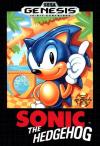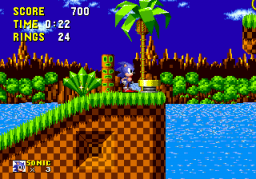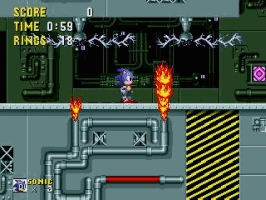Forum Links
Thread Information
Views
2,264
Replies
3
Rating
2
Status
OPEN
Thread
Creator
Creator
Semagorter
10-08-13 08:56 PM
10-08-13 08:56 PM
Last
Post
Post
Semagorter
10-09-13 08:13 PM
10-09-13 08:13 PM
System
9.2
Views: 1,249
Today: 0
Users: 5 unique
Today: 0
Users: 5 unique
Thread Actions
Order
The Beginning of a Sonicboom
Game's Ratings
Overall
Graphics
Sound
Addictiveness
Depth
Story
Difficulty
Average User Score
9.2
8.4
8.9
8.2
7.1
6.7
6.4
10-08-13 08:56 PM
Semagorter is Offline
| ID: 901186 | 2105 Words
| ID: 901186 | 2105 Words
Semagorter
Level: 11




POSTS: 7/17
POST EXP: 5416
LVL EXP: 5047
CP: 1539.5
VIZ: 41862
POSTS: 7/17
POST EXP: 5416
LVL EXP: 5047
CP: 1539.5
VIZ: 41862

Likes: 2 Dislikes: 0
Sonic the Hedgehog 1 practically changed gaming forever, even if the game itself isn't all that revolutionary. No, it's real impact comes from being the first real competitor to Nintendo's admittedly tyrannical monopoly over the console video game market. But how does it hold up as an actual video game? The plot is, on the surface, not particularly deep. The evil Dr. Ivo "Eggman" Robotnick has captured cute little animals inside robots in order to power them, using them to take over the world, and is up to Sonic to rescue the creatures and defeat Eggman-I mean Robotnick. However, I've noticed a very subtle nature v.s. Technology theme going on, especially in the later levels, but still, it's not deep either, but it's something. The controls aren't all that different from other platformers of the time. Move left and right, as well as jump, to either reach new heights or defeat enemies. However, you could also curl up into a spiky ball that also acts as a means of offense. Rolling into an enemy defeats it, and you usually curl up into a ball when you jump. The last part is essential for numerous parts of the game, especially for the bosses. Also, Sonic can't swim in water. His motor skills are dampened (pun intended this time) while underwater and if you stay down too long, a pretty haunting track reminiscent of the Jaws theme will play, and if you don't get out in time after that, you'll drown. The marketing suggests the main draw being the unprecedented speed, in which you go really really fast as opposed to, say Mario. However, I've noticed that a good majority of the game doesn't involve high speeds of nearly any kind, instead opting for traditional platforming. Very few moments involve actually going really fast. The speed was probably used as a hook as opposed to being a more core mechanic in later games. As such, various maneuvers achievable in later games aren't as applicable here. The most frustrating derision is the lack of the spin dash, the signature method of building up speed while being in the same position This makes Sonic 1 on the Genesis/Mega Drive one of the very few games in the franchise where you couldn't do such a thing. While some slack could be cut due to early installment weirdness, the level design speaks otherwise. There are many instances, even during Green Hill Zone (the first zone in the game) where you had to build speed by walking back and then rolling at the precise moment. ...and sometimes it wouldn't work all the way. (-.5 for lack of easy speed building.) For example, there's a hidden area in Act 2 of Green Hill Zone where you could only exit (or entered) via the previous method. You could imagine how annoying it is. Speaking about level design, despite the speed focus (at least at the time; later games make it look like a non-priority), there were still many alternate paths to the end goal, and the player is forced to decide which one is the best. Actually, to be fair, paths is an overstatement; you could venture between these "paths" to decide how to get through the level the fastest. That's, what I believe, the main thing that separates Sonic from other platforming franchises: While speedrunning is a common activity in video games, Sonic makes it a core element of the series. It even has a timer on every level to show you how efficient you were at racing through the level. It's less about the feeling of speed and more about actually getting through the level as quickly as possible. But I digress. How are the actual levels? Well, I've noticed that they seem to slightly flip flop on focusing on either speed or platforming as a whole. The odd-numbered Zones tend to lean slightly to speed, while the even-numbered ones have a tad more platforming. At its core, though, it's still mainly about platforming. However, individual moments in each level may highlight certain aspects despite the general convention of the Zone. For example, Marble Zone, as a whole, is more about platforming. However, there's an instance where you have to push a "door" out of the way in order to progress, but as soon as you do so, a stream of lava starts approaching, and you have to get out of there as fast as you could. Levels do slightly increase in complexity and difficulty, both in platforms and enemies. Enemies are at least varied and creative, and they do get just a tad harder each time. You go from Motobugs in Green Hill Zone, to Catapillers in Marble Zone that you could only hit at the head lest you get spiked, to rolling blue robots that chase you around in Spring Yard Zone, and so forth. Previous enemies do return, though. Same thing in regards to obstacles. Early on, there isn't much, but obstacles also vary, and even more so than the enemies, fit with the theme of each level, with many obstacles not appearing outside of their respective zones. Except for Labyrinth, but if I were to say anymore, spoilers would be the least of my worries. And speaking about themes, even this early in the franchise, there's definitely some Ur examples at play here, with the most notable example being Spring Yard Zone with its "bouncy" nature developing into the Casino theme we often see in Sonic games to this day. This despite there being only six themes in the game. You may have noticed I haven't talked much about power-ups. Well, there isn't much to say in that department. The shield power-up protects you from a single hit, the sonic icon power-up gives you an extra life, The sparkle power-up grants you invincibility complete with its own variation of the title theme, and rings may hold various amounts of rings inside of them, though it's usually 10. Most of these can be found in secret areas or otherwise be off the beaten path. The more cleverly hidden areas will usually contain an extra life, while more "obvious, but off the road" areas are more likely to contain rings, or a shield if you're lucky. The power-ups won't save you from bottom-less pits, though. Rings are an integral part of the game and franchise; they're to Sonic as Coins are to Mario. If you happen to get hit by an enemy or projectile, you lose all of your rings, and you'll have to collect them back. The amount of rings that actually drops varies from game to game, but in this instance, there's a limit to how many rings can pop out, with the rest being gone forever. If you happen to get hit while carrying no rings, you lose a life. Lose all lives, and it's Game Over. Now, Sonic Team did took an interesting approach in how to handle continues: Make the player earn them. See, every 50,000 points would normally give you an extra life in other games. However, it instead gives you an extra continue. You'll know if you got one by a specific sound and a miniature idle Sonic at the end of a stage. Rings also serve another purpose. If you happen to hold on to 50 rings by the end of the stage (that's not Act 3), you'll be able to enter a special stage in order to retrieve a Chaos Emerald. There's six in all, as opposed to seven in later games. Again, early installment weirdness. I'd say that accessing the stages is the simplest of the three Sonic games on the Genesis, though actually obtaining the Chaos Emeralds themselves is a different story. You enter a stage in ball form with interesting patterns in the background as you work your way in a rotating maze trying to reach the emerald. There's certain circles that make the rotation go back and forth, or alter its speed. If you hit a goal, though, you end the stage with no emerald. The emerald is usually protected by certain colored diamonds, and touching them makes them change colors until they disappear. The bonus stages, like the Zones, get increasingly difficult, but should you fail a bonus stage, the next time you enter a bonus stage, it'll have moved on to the next one. I'm sure it loops around, but this does get slightly annoying. Plus, you don't get that much chances of actually doing so. Not enough for a full point deduction, since this is a bonus, and the reward isn't that amazing, unlike future games, but it's something to keep in mind. (-.5 for frustrating bonus.) I'd say the difficulty is fairly well-balanced, assuming you know what you're doing. But there isn't a save system, at least not an easy one. There is a code that allows you to access a stage menu and allow you to pick which Act you'd like to start with, but it's not that common. I'm not even sure it saves the best time for each level, which is odd, considering that it's one of the trademarks of the series. It's thankfully not that long, and as such, it's more comparable to NES titles as opposed to, say SNES ones. Still, it's something of a transitional game as far as difficulty and accessibility goes. This part's hard to explain; I'll admit it. Graphically, it's beautiful, even if the technology isn't being pushed that far. There's a lot of visual tricks like loops and slides that weren't exactly present before in many games, but more importantly, it sports a fantastic art direction, making it one of the earliest examples of the importance of aesthetic design. This helped immensely, as the Genesis, sans processor, was technologically inferior to the SNES in nearly every way. The environments look like they've been cut out of paper or made of some real plastic material (if that made any sense), and everything else is distinctive and varied. The color palette is used wisely, as well, giving each world it's own unique theme and being very, VERY easy to recognize. Sonic himself even has an idle pose, which was rare back in the day. All in all, it's one of the top looking early Genesis games, despite the technological inferiority. The music is also top-notch. Pretty much every major track is spot-on, and while we all have our favorites (Hello, Starlight.), nonetheless, they all fit the mood or at least very enjoyable to the ears. The exception being the drowning music, of course. Sounds are also well-done, though generally unnoticeable thanks to the music. You'll at least know which sounds indicate which effect, and they're fairly iconic, as most of them (especially the lose rings sound effect) have been reused in Sonic games twenty years later. It should also be noted that Sonic is one of those series where, like franchises like Donkey Kong, Final Fantasy, and Megaman, it's particularly renowned for its soundtracks, despite not having as many concerts as, say, Final Fantasy. It's closer to Megaman in terms of reputation; many rockin' songs over the years to keep our ears pounding. ...in a good way. In other words, music is one of the first things that comes to gamers' minds when they think of Sonic. I guess that rock band backstory that was cut out of the original game makes more sense now, doesn't it? Overall, the audio is top of the line, and may have pushed what the audio chips in the Genesis were capable of, and as such rightfully kick-started it's famous sound career for many years to come. In conclusion, Sonic the Hedgehog 1, despite some outdated elements, is a worthy competitor to Nintendo at worst, and the perfect rival at best. The game blew people's minds back in '91 back in the day, and despite me personally preferring Super Mario World for various reasons, there can be little doubt that Sonic 1 made an impact, and it hit hard. (+.5 for said impact.) So how could it be improved even further? 1 - Add in the Spin Dash. Seriously, the level design and mechanics are slightly at odds here in this regard, and it makes building speed, one of the series trademarks, more frustrating than it should be. Thankfully, I've heard that remakes and ports of this game have added in the spin-dash feature. 2 - Improve the bonus stages. If I were to fail a bonus stage, I'd like to try again to see if I can reach the dang emerald. ...okay, that was unintentional on my part. |
Member
Affected by 'Laziness Syndrome'
Registered: 10-20-11
Last Post: 3242 days
Last Active: 2835 days
Affected by 'Laziness Syndrome'
Registered: 10-20-11
Last Post: 3242 days
Last Active: 2835 days
Post Rating: 2 Liked By: sonicthehedgehog57, SuperCrash64,
10-08-13 09:35 PM
 SuperCrash64 is Offline
| ID: 901227 | 122 Words
SuperCrash64 is Offline
| ID: 901227 | 122 Words
 SuperCrash64 is Offline
SuperCrash64 is Offline
| ID: 901227 | 122 Words
SuperCrash64
CrimsonCrash 64
CrimsonCrash 64
Level: 115





POSTS: 2595/3864
POST EXP: 308376
LVL EXP: 16571071
CP: 20615.5
VIZ: 318216

POSTS: 2595/3864
POST EXP: 308376
LVL EXP: 16571071
CP: 20615.5
VIZ: 318216

Likes: 0 Dislikes: 0
Wow really in depth there. i must say this is one heck of a soild review, The only tidbits I'll point out is some of the points pointed in the review, feels a little better for walkthrough. And Also: Unfournately: one of those remakes you've pointed out, The Gba port sucked.. :X. I do agree that some Pshyics in this game is a little bit of a struggle to work with, but At least sega knew that by adding in the spin dash in sonic 2. And The bonus stages are mean't to be a pain, I've always failed at them, I got the emeralds sometimes by pure luck. So your not the only one who might fail at completeting these XD. |
Trusted Member
Affected by 'Laziness Syndrome'
Registered: 12-19-12
Last Post: 35 days
Last Active: 35 days
A unique thread creator  . Helped team trusted pull 300 points in the summer 2016 tdv competition. . Helped team trusted pull 300 points in the summer 2016 tdv competition. |
Affected by 'Laziness Syndrome'
Registered: 12-19-12
Last Post: 35 days
Last Active: 35 days
10-09-13 02:33 PM
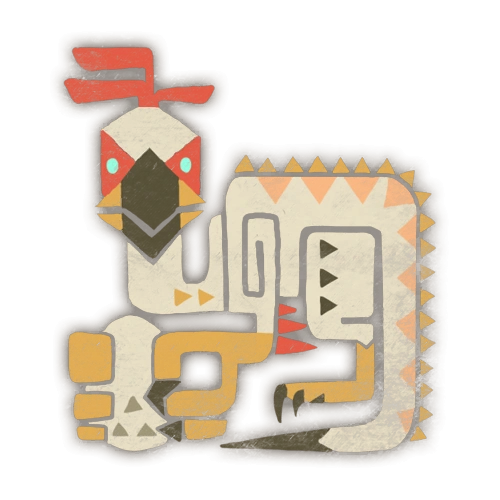 supercool22 is Offline
| ID: 901576 | 25 Words
supercool22 is Offline
| ID: 901576 | 25 Words
 supercool22 is Offline
supercool22 is Offline
| ID: 901576 | 25 Words
supercool22
Level: 130




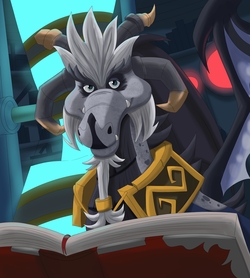
POSTS: 2495/5160
POST EXP: 193932
LVL EXP: 25623370
CP: 86257.5
VIZ: 5313098

POSTS: 2495/5160
POST EXP: 193932
LVL EXP: 25623370
CP: 86257.5
VIZ: 5313098

Likes: 0 Dislikes: 0
This is a great review you made...its has lots of information...(that i cant read all of it)..Keep up the good work. Have a nice day. |
Vizzed Elite
Former Admin
Affected by 'Laziness Syndrome'
Registered: 11-30-12
Last Post: 17 days
Last Active: 12 hours
Former Admin
Winter 2024 TDV Winner  |
Affected by 'Laziness Syndrome'
Registered: 11-30-12
Last Post: 17 days
Last Active: 12 hours
10-09-13 08:13 PM
Semagorter is Offline
| ID: 901847 | 78 Words
| ID: 901847 | 78 Words
Semagorter
Level: 11




POSTS: 8/17
POST EXP: 5416
LVL EXP: 5047
CP: 1539.5
VIZ: 41862
POSTS: 8/17
POST EXP: 5416
LVL EXP: 5047
CP: 1539.5
VIZ: 41862

Likes: 0 Dislikes: 0
Thanks for the replies, guys. And SuperCrash64, I know of the GBA remake. Shame. As for the points, if you're referring to examples, then they're just that: examples to help illustrate what I'm talking about. That is unless you're talking about something else entirely. As for the bonus stages, really, my only gripe is that I have to move on to the next one. I've gotten all 6 emeralds before, but it wasn't easy, let me tell ya. |
Member
Affected by 'Laziness Syndrome'
Registered: 10-20-11
Last Post: 3242 days
Last Active: 2835 days
Affected by 'Laziness Syndrome'
Registered: 10-20-11
Last Post: 3242 days
Last Active: 2835 days


 User Notice
User Notice 